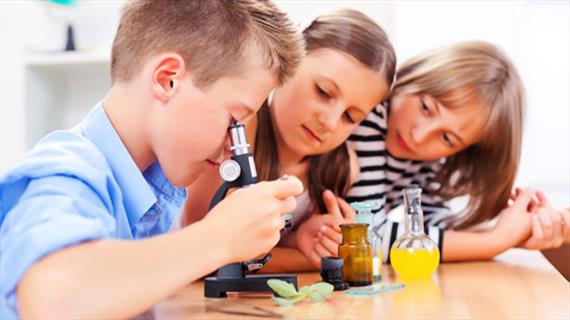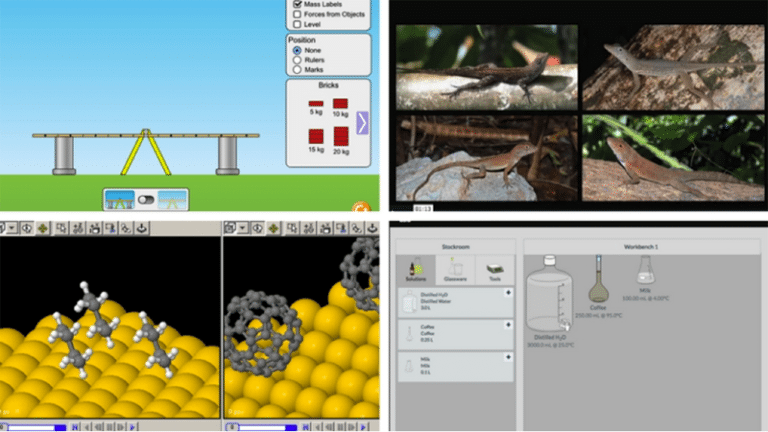Looking for ways to deliver that “aha” moment in your high school biology, chemistry and physics lessons? Interactive science simulations can add a fresh level of discovery and insight to your regular hands-on science programs, and give students the opportunity to practice and learn at home when classroom equipment might not be at hand. Here are some handpicked online simulations to incorporate into your curriculum.
Molecular Workbench
This site features hundreds of free simulations in biology, nanotechnology and more. Try the “Molecular Self-Assembly” simulation, in which students learn how nature constructs complex objects from molecules and how different conditions affect the behavior of molecules of various shapes.
Electric Motor
Have students test and explore an interactive animation of an electric motor. The coil will rotate when a current flows around it. Click the arrow buttons to turn the current on and off. Reverse the direction of the current to observe its effect on the coil’s motion.
Convex/Concave Lens
Students shift the position of a piece of glass, altering its shape to a convex or concave lens, which affects how beams of light through the glass will converge or diverge.
Google Sky
Teach your students about astronomy while peering up at a virtual universe. For a stargazing activity, choose your location via Google Earth and switch to the “sky” view, which shows the stars as they might appear from your own backyard.
Sugar and Salt Solutions
What happens when sugar and salt are added to water? Pour in sugar, shake in salt, and evaporate water to see the effects on concentration and conductivity. Zoom in to see how different sugar and salt compounds dissolve. Zoom in again to explore the role of water.
Plate Tectonics
In this simulation from the University of Colorado, students can move mountains and create oceans! By changing the temperature, composition and thickness of tectonic plates, students can envision how the Earth’s surface moves and changes.
Frostbite Theater
Don’t happen to have any liquid nitrogen or a Van de Graaff generator lying about in the classroom? These videos from Jefferson Lab will do the trick, and they’re funny too. Watch flowers shatter and balloons expand as if by magic! The collection also includes experiments that students can safely try in the classroom or at home.
Johnson Explorations
A variety of online simulations allow users to, for example, explore the architecture of a cell and vary its size, shape and number of surface villi to influence the ease of metabolites entering the cell and wastes leaving the cell.
How-To Videos
Ward’s Natural Science offers a long list of how-to videos for use in your class—from how to care for classroom creatures to lab safety (complete with pie-in-the-face action).
Bouncing Ball
Drop the ball onto one of the three surfaces to test the bounce height and observe how the potential and kinetic energy rises and falls over time.

